June 2022 - You are accessing an old version of our website. The SDGs Voluntary Commitments have been migrated here: https://sdgs.un.org/partnerships
You will be redirected to the new Partnership Platform in 10 seconds.
June 2022 - You are accessing an old version of our website. The SDGs Voluntary Commitments have been migrated here: https://sdgs.un.org/partnerships
You will be redirected to the new Partnership Platform in 10 seconds.
The Integrated Basin Development and Livelihood Promotion (IBDLP) Programme was launched by the Government of Meghalaya as its flagship programme in 2012 to create a institutional ecosystem for ecologically sustainable and inclusive development in Meghalaya. It aimed to put Meghalaya on higher growth trajectory. It seeked to redefine the relationship between the citizen and state and bring a paradigm shift by moving towards a demand driven partnership model of development. It was not prescriptive but created space for the choices regarding planning and implementation of by the people. IBDLP focused on building an inclusive framework which was sustainable and people-centered.
Meghalaya is rich in important minerals such as coal, limestone and has large forest cover, rich biodiversity and numerous water bodies. However, despite such natural abundance, almost half the population of the state lives below poverty line (BPL).
IBDLP’s primary objective was to ensure 11% growth during 2012-2017 through an inclusive and sustainable entrepreneur-led model implemented in convergence mode. The programme also seeked to promote knowledge-centric development through capacity building, particularly in natural resource management and entrepreneurship. It also promoted the creation of the required physical infrastructure in a convergent and participatory manner and set up efficient, adaptive and responsive governance systems for facilitating the process.
Meghalaya Basin Development Council provided for policy planning, innovation and coordination of stakeholder efforts. Headed by Chief Minister and consists of Ministers, Chief Executive Members of Autonomous District Councils and distinguished experts. Meghalaya Basin Development Authority was the nodal implementing authority being headed by Chief Secretary, Government of Meghalaya. District Basin Development Unit was the implementing agency to carry convergence of departmental activities. Enterprise Facilitation Centre facilitated citizen interface. Entrepreneurs were known as development partners. It was also supported by institutions like Meghalaya Institute of Entrepreneurship, Meghalaya Institute of Governance. India Water Foundation in partnership with the Meghalaya government assisted the implementation.
The IBDLP is a unique programme that involved every department in the Government of Meghalaya. To ensure unity of purpose and convergence, the programme was steered by the MBDC. The programme had identified nine sectors for entrepreneur-led development. These were i) apiculture; ii) aquaculture; iii) forestry and plantation crops; iv) horticulture; v) livestock; vi) rural energy; vii) sericulture; viii) tourism; and ix) water. These nine focus sectors are approached in a mission mode, with specified, precise targets to be achieved within specified deadlines. Mission Green Meghalaya is another mission with its primary focus is on environment conservation. These nine missions, while dealing with different sectors, nevertheless had certain common, cross-cutting requirements. To address these, a series of ‘accompanying measures’ were devised and formed another major component of the programme which includes financial inclusion, market access and climate change adaptation.
Recognising the need for addressing the common requirements of the nine sectors, the IBDLP implementation was based on four pillars of knowledge management, natural resource management, entrepreneurship development and good governance, with convergence as the underlying strategy. The rationale behind a convergent strategy was two-fold – optimizing resources by harnessing departmental synergies and improving planning and implementation. Under Mission Green Meghalaya, which aimed to rejuvenate the environment and stop further environmental degradation, a cadre of community-selected volunteers has been created at village and micro watershed levels to generate awareness of Natural Resource Management (NRM) and resource conservation.
Enterprise Facilitation Centres (EFCs) were set up at the block level. Two types of assistance – training and bank linkages – were provided. Training initiatives are aimed at upgrading skills to enable partners to undertake more valuable and profitable activities. To empower women, special scheme known as ‘Women’s Economic Empowerment Entrepreneur Scheme’ was started to provide women entrepreneurs with margin money of Rs. 5,000. All women over 18 years of age are eligible for the scheme, provided they submitted a sound business plan to the bank in the form of a project report. The Meghalaya Trade Promotion Organisation (MTPO) was meant to handle the marketing of products by identifying markets; creating forward and backward linkages and carry out branding, packaging and promotion. It was also required to provide market intelligence inputs to producers and advertise their products outside the state.
The Knowledge Services Division (KSD) controlled the knowledge management function, guided by the underlying philosophy of creating networks that encourage free flow of information and foster dialogue between all the IBDLP partners like government, citizens and traditional institutions. With a view to organizing indigenous knowledge resources, the programme documented Meghalaya’s rich traditional knowledge domains such as medicine, aromatic plants, livestock, agriculture, apiculture, sericulture and forestry.
Foremost impact was the attitudinal shift towards entrepreneurship. By bringing change in people’s mindset has been one of IBDLP’s biggest achievements. IBDLP has been able to change the attitude to a great extent towards one of entrepreneurship, where citizens think of how they can undertake profitable activities and generate their own livelihoods. We secured greater access and efficiency for all stakeholders with EFC functioning as a single window through which partners receive all the services. Being conveniently located at the block level, it not only connected them to the relevant departments but also did all the necessary follow-ups, thereby increasing efficiency in stakeholder matchmaking.
The geo-climatic conditions in Meghalaya created disadvantages like water stress or weather extremes create significant challenges for the community. This disadvantage was converted into advantage through Integrated watershed management and provision of alternate livelihood which ensured that the residents are not affected by vagaries of climate change. With people centric forestry as one of the mission, initiatives like afforestration, increasing tree and forest cover, preserving traditional forests area, an attempt was made to link the tangible outcomes to the government’s mission of Green India. Also, working towards restoration of water-land-biomass balance, we focused on the systemic reforms rather than silo approach while working with the demand side management. Also, by creating supply value chains we attempted to bridge the missing gaps through forward and backward linkages. We believed in envisaging prospects to the community through “in-situ development”.
Enabling women to become empowered and engaged, it paved a way for mainstream and inclusive society which made women resilient and self sufficient. The project helped in reducing inequality. In short, they are the rightful managers of their own society. It seeks to redefine the relationship between the citizen and state and to bring about a paradigm shift in the way development is viewed.
It also enabled social inclusion, having a holistic impact on the society covering inter related dimensions of livelihoods, capacity building, and convergence of policy and institutions made the plans deliver into actions. For instance, the tribals belonging to hunter community were brought to mainstream development from the periphery by encouraging spirit of entrepreneurship.
Through public awareness and participation, the programme made a significant impact in building awareness and securing people’s cooperation. Better monitoring and transparency facilitated secure, openness flow of information or resources from the government to the people and vice-versa. The model can be scaled up through flexible tailoring according to suitable geographic terrain or socio-economic considerations.
The biggest challenge faced by IBDLP has come from the absence of entrepreneurship culture in the state. People’s dependence on government doles and subsidies makes it difficult to orient them towards creating their own livelihoods. The other major hurdle was related to securing and repaying loans. While partners were reluctant to access formal credit due to the intimidating procedures involved, banks also were reluctant to offer loan to some due to doubts over their credit worthiness. This required the government to step in and act as guarantor for potential entrepreneurs.
The factor of connectivity due to tough geographical constraints was also overcome. The state’s difficult topography and terrain made connectivity a challenge. Block-level EFCs did not always have internet connectivity and were unable to upload their partner data directly onto the PMIS.
The strength of this initiative lies in the development of an integrated development model which makes it highly replicable for others states as well. For any state to replicate this model, it is important to train people, government functionary, and the community at large. These factors make the initiative economically viable and sustainable. Further, the initiative proved its social relevance by providing an opportunity for the government to provide a well balanced development to its citizens.
The initiative received support from the highest levels of the State government and had generated significant expectations among people. IBDLP generated both demand and assured supply and contributed a positive momentum to the growth which was seen as valuable asset for sustainability. IBDLP is best suited for replication in regions like Meghalaya that are rich in natural resources but having delicate ecosystems like the Himalayan states. We attempted to scale the project to another North-Eastern state of India Sikkim where the core thrust was based on creating an inclusive ecosystem for better growth and sustainable development. Rather than targeted approach, a holistic and institutionalized service was created. These areas benefitted immensely from IBDLP’s strategy of sustainable livelihood generation driven by knowledge-based NRM. IBDLP’s strong emphasis is on creation and management of community knowledge, which partly drives the bottom-up planning process.
In terms of replicability, IBDLP is best suited for replication in regions like Meghalaya that are rich in natural resources but have delicate ecosystems that limit the scope for industrialisation. Some such states/regions are Himachal Pradesh, Uttarakhand, Nagaland and the hill districts of Manipur. These areas can benefit immensely from IBDLP’s strategy of sustainable livelihood generation driven by knowledge-based NRM. IBDLP’s strong emphasis on creation and management of community knowledge, which partly drives the bottom-up planning process, is another strategy that can be profitably replicated at the level of Panchayati Raj Institutions.
It may be difficult to exactly replicate the model in mainland states that are larger, have bigger governments and higher population densities and a different natural resource ecosystem. However, the basic principles of IBDLP – convergence, extensive outreach and participation, knowledge management, involvement of the young professionals, and demand-driven partnership approach – can be customised and replicated in most regions.
Implementation of IBDLP has been unprecedented in so far as the entire government of a state has rallied around a programme and carried out the reforms necessary to achieve its goals. The IBDLP’s aims are also extremely ambitious, as it attempts to change the mindset of an entire state in a mission-mode manner. The programme is still underway but has set a powerful precedent in livelihoods management for other states that seek to raise their citizens out of poverty in a manner that conserves the environment and is driven by the local community.
Article Link:
1. Managing Water Resources via Water-Energy Environment Approach for Smart Cities in Meghalaya (India): A Civil Society Perspective published in Journal of Advanced Research in Construction & Urban Architecture (JoARCUA) Vol 2, No 3&4
http://technology.adrpublications.in/index.php/JoADRCUA/article/view/849/pdf_22
2. Economic Inclusion and Environmental Sustainability: Case Study Meghalaya
http://unsdn.org/2016/08/29/economic-inclusion-and-environmental-sustainability-case-study-meghalaya/
3. Civil Society Stewardship Towards Sustainable Water Use in Agriculture
http://media.wix.com/ugd/90f22a_b93abbd902e8469daedaa6821a81b564.pdf
4. The Meghalaya approach:
http://oneindiaonepeople.com/the-meghalaya-approach/
5. Economic Inclusion and Environmental Sustainability: Case Study Meghalaya
http://unsdn.org/2016/08/29/economic-inclusion-and-environmental-sustainability-case-study-meghalaya/
6. Meghalaya: Sustainable Basin Management
http://www.riob.org/pub/INBO-25/files/assets/basic-html/index.html#27
7. Meghalaya’s Growth Potential
http://www.focusglobalreporter.org/meghalayas-growth-potential/
8. Report on water-related problems in Meghalaya
http://www.focusglobalreporter.org/report-on-water-related-problems-in-meghalya-2/
9. Mainstreaming Meghalaya via Environment plus Approach
http://www.icid.org/icidnews_14_1.pdf
10. Report on Workshop on Water Resources Management in North-East India
http://www.focusglobalreporter.org/report-workshop-water-resources-management-north-east-india/
11. Inclusive Development via Environment Plus. Approach for Water &. Human Development in South Asia. -. Dr. Arvind Kumar.
http://www.unescap.org/sites/default/files/Policy%20Dialogue%20on%20Regional%20Cooperation%2C%20Connectivity%20and%20Inclusive%20Development%20in%20South%20and%20South-West%20Asia%20-%20Regional%20Cooperation%2C%20Human%20Development%20and%20Water%20by%20Dr.%20Arvind%20Kumar.pdf
12. Trends and Innovations and Assigning. Responsibilities to the Collaborating. Partners: In Urban Planning Towards Resilient Cities
http://www.unescap.org/sites/default/files/Arvind-Kumar-RPDSUSA-17-18dec2014.pdf
13. http://asiapacificadapt.net/adaptationforum2013/sites/default/files/Arvind%20Kumar.pdf
14. India water foundation two-day workshop concludes
http://www.dailypioneer.com/state-editions/dehradun/india-water-foundation-two-day-workshop-concludes.html
15. “Harnessing the Water-Food-Energy-Nexus for. Trans-boundary Basin Management. Cooperation”. : A Case Study of Meghalaya's Climate Change Adaptation
https://www.unece.org/fileadmin/DAM/env/documents/2014/WAT/10Oct_13-15_Geneva/CC_5thworkshop/presentations/5-2_Harnessing_the_Water-Food-Energy-Nexus_Kumar.pdf
16. Implementing the Nexus of. Water, Energy & Food at the Trans- boundary Basin Management level in the. Himalayan Region of South Asia: Challenges and Solutions
http://wef-conference.gwsp.org/uploads/media/C04_Kumar.pdf
17. Harnessing Water-Energy Nexus for Transboundary Basin Management Cooperation: A Case Study of Meghalaya (India) (Abstract-Volume 2014 Page No. 13)
http://www.worldwaterweek.org/wp-content/uploads/2014/08/2014_Abstract_Volume_web.pdf
18. Ecosystem Based Adaptation: Sustainable Water Use in Urban Area (Abstract-Volume-2015 Page No. 82-83)
http://www.worldwaterweek.org/wp-content/uploads/2016/08/abstract_volume_2015_-_complete.pdf
19. Community based integrated water resources management (Abstract-Volume-2017 Page No. 135-136)
https://www.yumpu.com/en/document/view/59281786/abstract-volume-2017

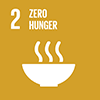

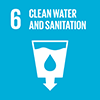
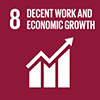
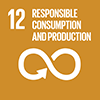
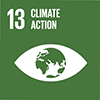
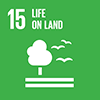
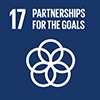
 Start: 11 May, 2010
Start: 11 May, 2010 Completion: 01 January, 0001
Completion: 01 January, 0001